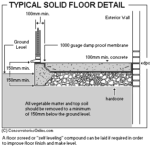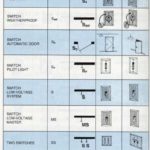
Q. a) Using diagram, label the elements of solid ground floors and show the symbols of its material for each element. (10 marks) b) List five (5) types of floor Read More …
Estate Agent's Examination Part 1&2
BOVAEP Diploma in Estate Agency (VAL)

Q. a) Using diagram, label the elements of solid ground floors and show the symbols of its material for each element. (10 marks) b) List five (5) types of floor Read More …

Q. a) Explain the types of clay bricks and describe their characteristics and usage. (10 marks) b) Using diagrams, explain the types of bond that is suitable for the following Read More …
Q. a) State the differences between softwood and hardwood based on the botanical terms. (10 marks) b) Discuss the advantages and disadvantages of wood as a building material compared to Read More …
Q. a) State the materials used in the concrete mix and explain the functions of each substance. (10 marks) b) Explain how the following factors influence the strength of concrete: Read More …

Q. a) State what is floor plan and specifications in a building drawing. Explain the information that should be included in the floor plan and specifications. (15 marks) b) Sketch Read More …
Q. What are the suitable foundation types of variety of soil? A. Verbatim from: Types of Foundation DiyEx | April 9, 2015 Using or being able to identify the correct Read More …
Q. (a) When contractors are given permission to start construction work, site works will begin to be implemented. Briefly explain the following site work operations: (i) Clearing the site(ii) Setting Read More …
Q. (a) Elaborate four (4) factors influencing design and size of a building foundation. (10 marks) (b) Using diagrams, explain the types of foundation suitable for the following types of Read More …
Q. (a) With the use of diagrams, explain the methods of supporting the ends of joists and the types of joist strutting in the construction of the timber upper floor. Read More …
Q. (a) State four (4) general principles of window design. (10 marks) (b) Using diagrams, explain the types of window based on the methods of opening. (15 marks) (25 marks, Read More …
Q. (a) With the use of diagrams, describe the differences between fixed ceiling and suspended ceiling. (15 marks) (b) Explain five (5) types of ceiling finishes normally used for suspended Read More …
Q. (a) Explain why concrete is widely used in building construction. (10 marks) (b) What is workability of concrete? Explain the factors influencing the workability of concrete. (15 marks) (25 Read More …
Q. (a) Explain the factors that need to be considered in selecting floor finishes. (10 marks) (b) Suggest and give reasons for selecting the types of floor finishes suitable for Read More …
Q.What is Caisson Foundation? Does it differ from Well Foundation? (12.09.2015)A.Actually, Deep Foundation consists of PILE, WELL and CAISSON Foundations. There is a cross over of Well foundation to Caisson Read More …
Q.Briefly explain ‘Well Foundation’. (12.09.2015)A.Well foundation is a type of deep foundation which is generally provided below the water level for bridges. Cassions or well have been in use for Read More …
Q. Explain the types of building foundations. What are types of ‘Deep Foundations’? (11.09.2015, modified 12.09.2015) A. [Introduction The building foundation interacts with the earth. Therefore, this interaction may result Read More …
Q. Explain the types of building foundation suitable for single and double storey houses. (25 marks, 2015 Q1) (11.09.2015) A. Readings on ‘Deep Foundations’ is available in the link to Read More …
Q. (a) What is meant by pitched roof? Label the elements of timber pitched roof and explain its terms. (10 marks) (b) Describe five (5) types of roof finishes and Read More …
Q. (a) Explain why continuous joints must be avoided in brick works bonding. (10 marks) (b) Using diagrams differentiate the following types of brick bonding:- (i) Stretcher and Header Bond Read More …
Q. (a) With the aid of diagram, label the elements of a timber staircase. (10 marks) (b) Explain five (5) general principles in the construction of timber stairs. (15 marks) Read More …